Abstract
We examine the ability of four implementations of the random model to map quantitative trait loci (QTLs). The implementations use either the expectation or the distribution of the identity-by-descent value at a putative QTL and either a 2 x 1 vector of sib-pair traits or their scalar difference. When the traits of both sibs are used, there is little difference between the expectation and distribution methods, while the expectation method suffers in both precision and power when the difference between traits is used. This is consistent with the prediction that the difference between the expectation and distribution methods is inversely proportional to the amount of information available for mapping. We find, though, that the amount of information must be very low for this difference to be noticeable. This is exemplified when both marker loci are fixed. In this case, while the expectation method is powerless to detect the QTL, the distribution method can still detect the presence (but not the position) of the QTL 59% of the time (when using trait values) or 14% of the time (when using trait differences). We also note a confounding between estimates of the QTL, polygenic, and error variance. The degree of confounding is small when the vector of trait values is used but can be substantial when the expectation method and trait differences are used. We discuss this in light of the general ability of the random model to partition these components.
Full text
PDF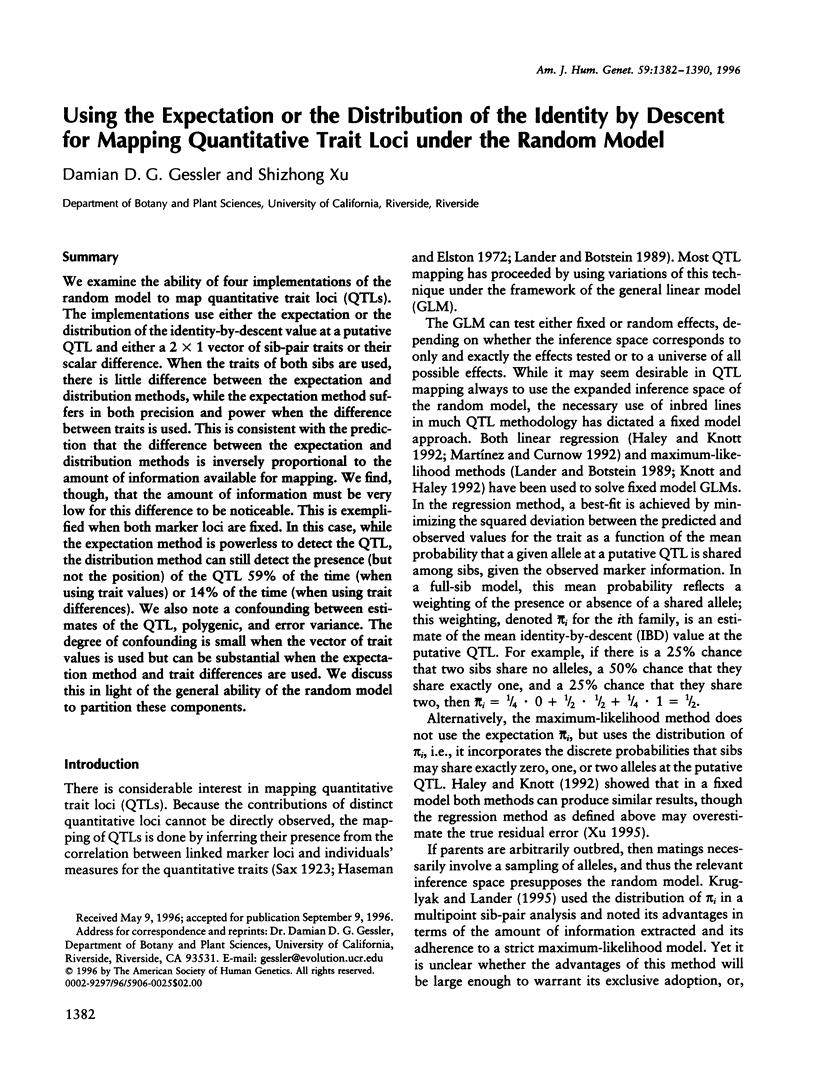
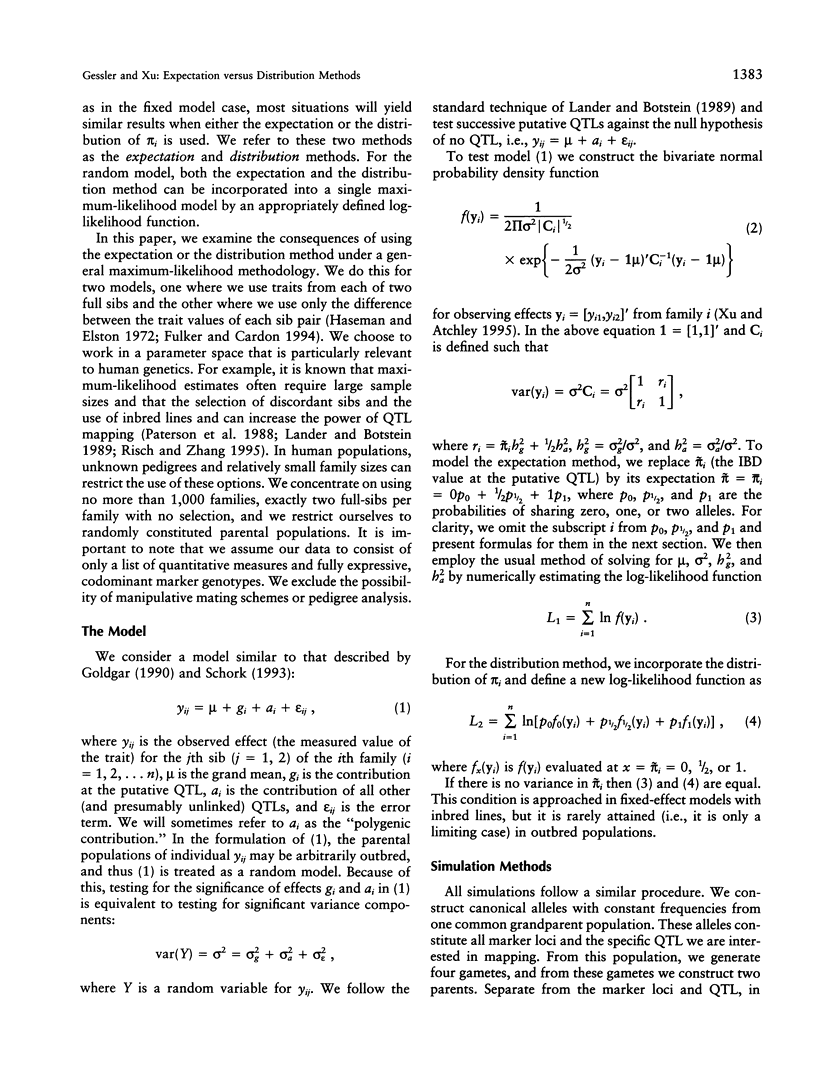
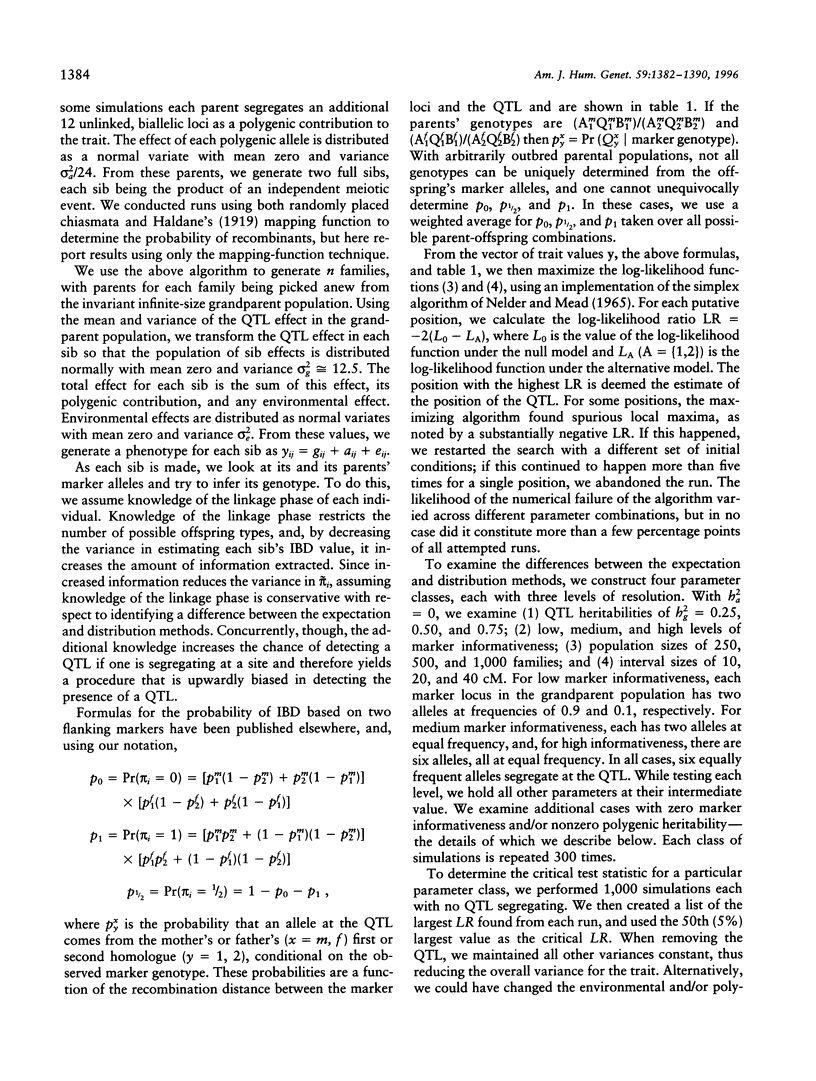
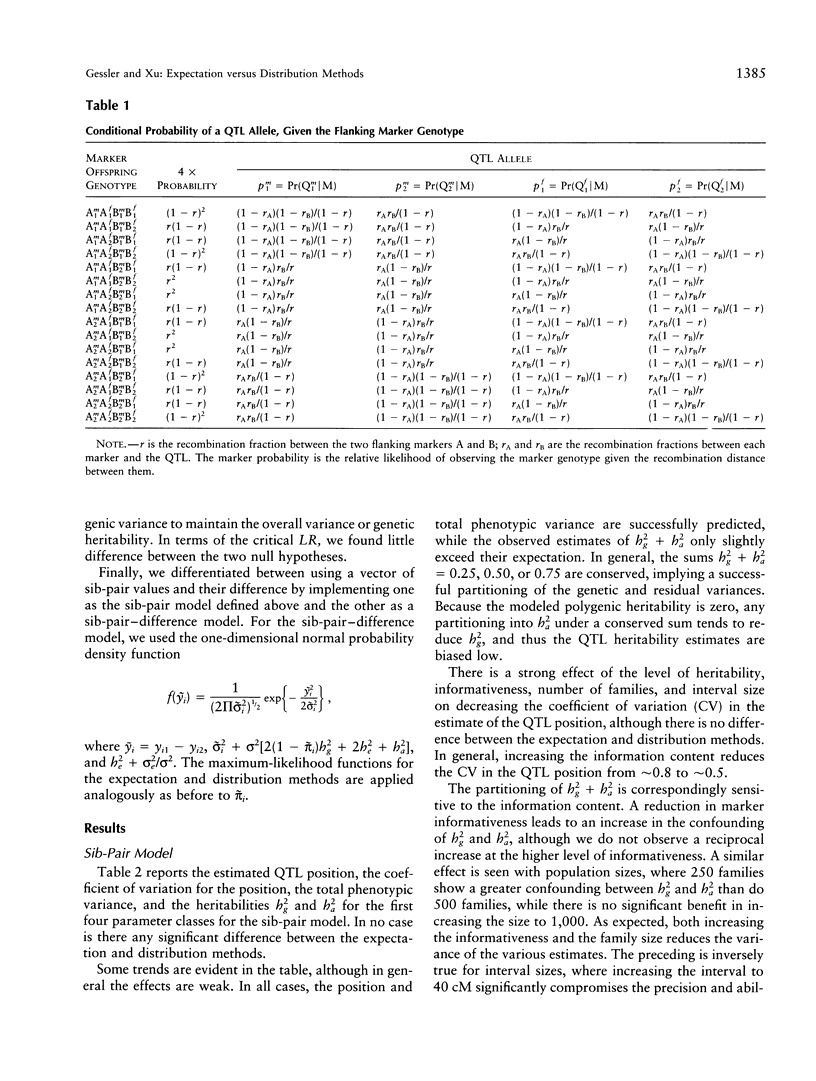
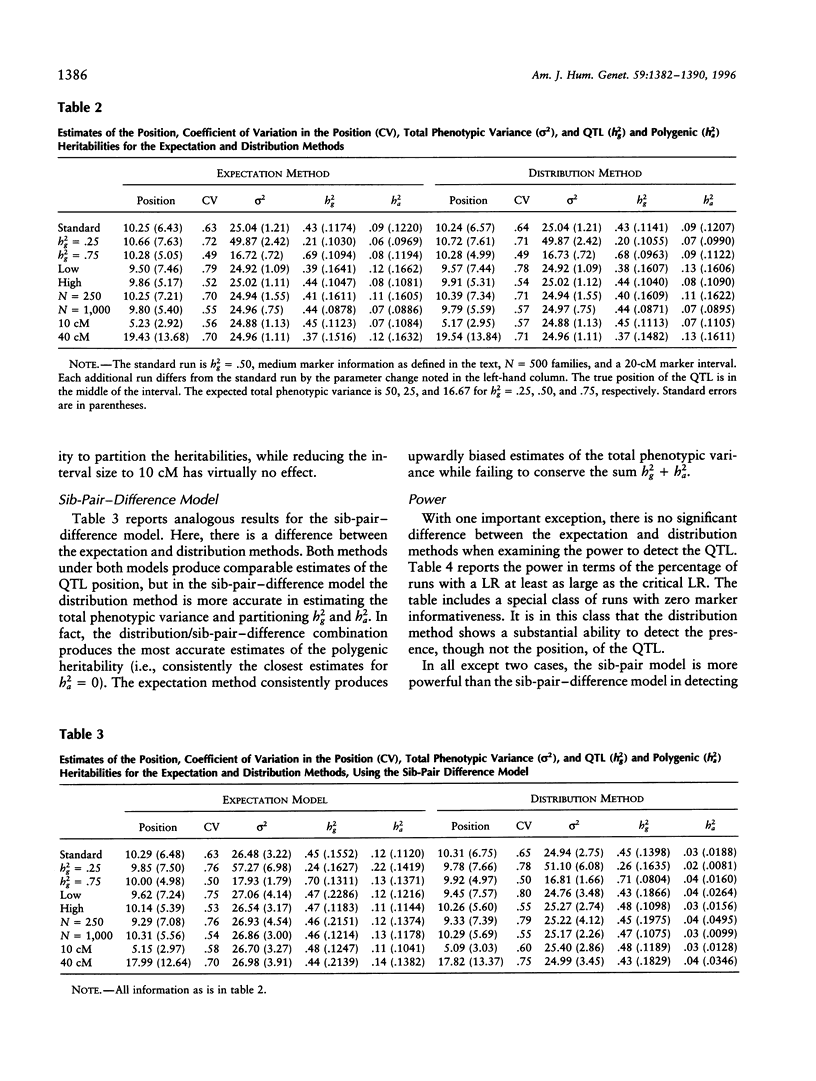
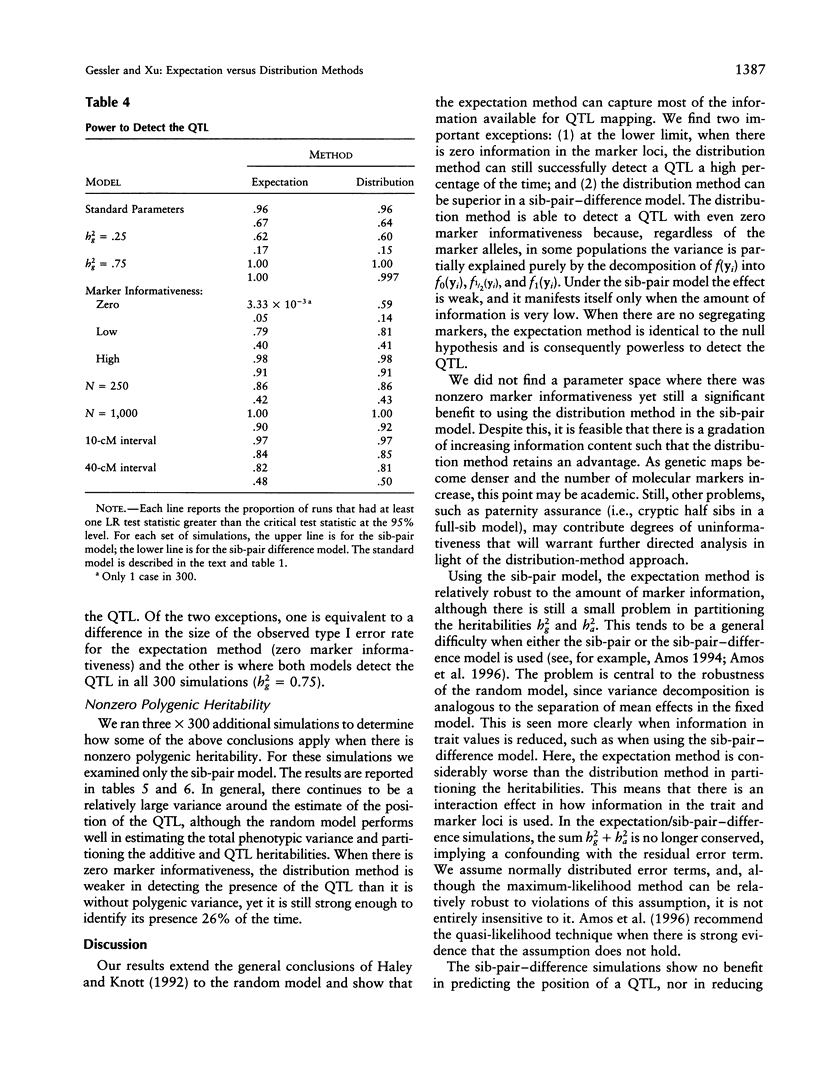
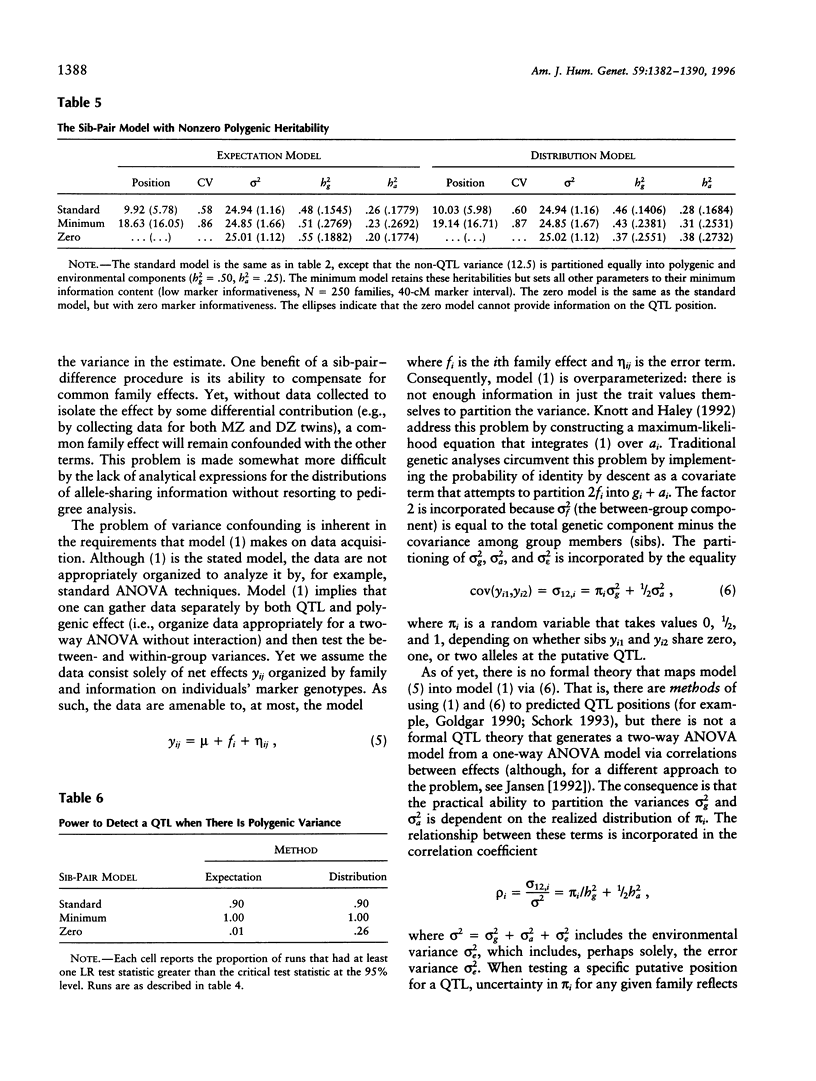
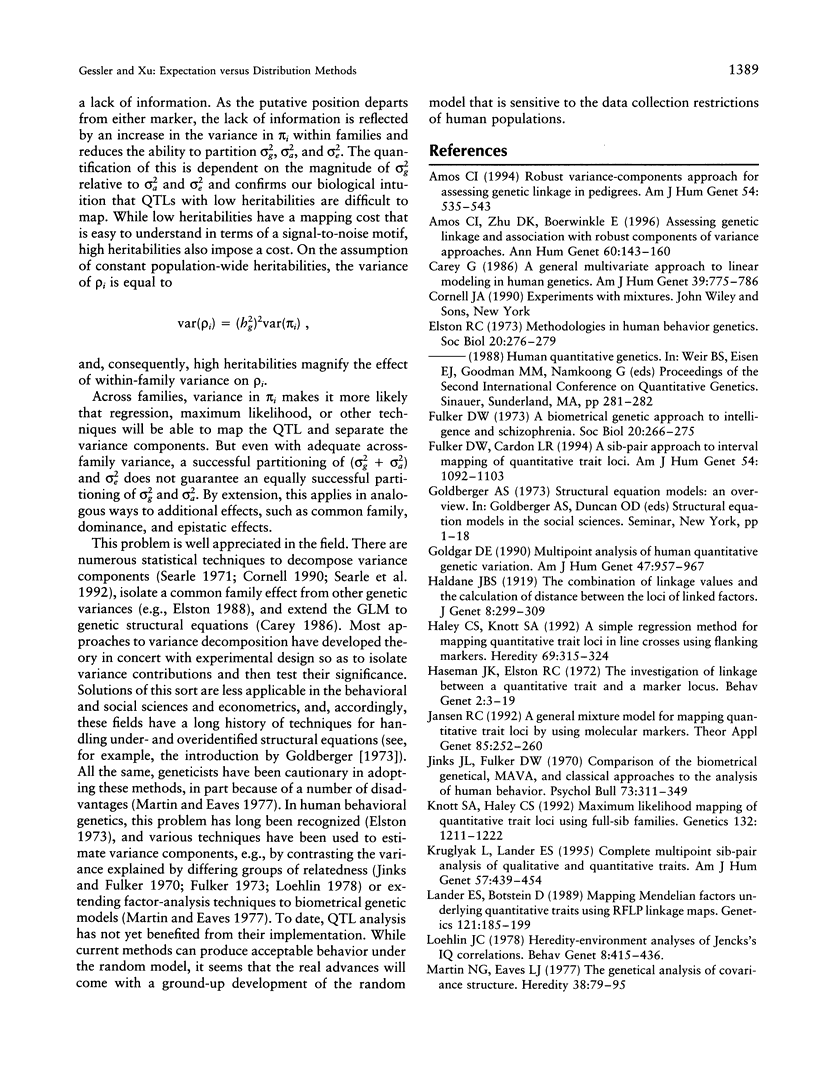
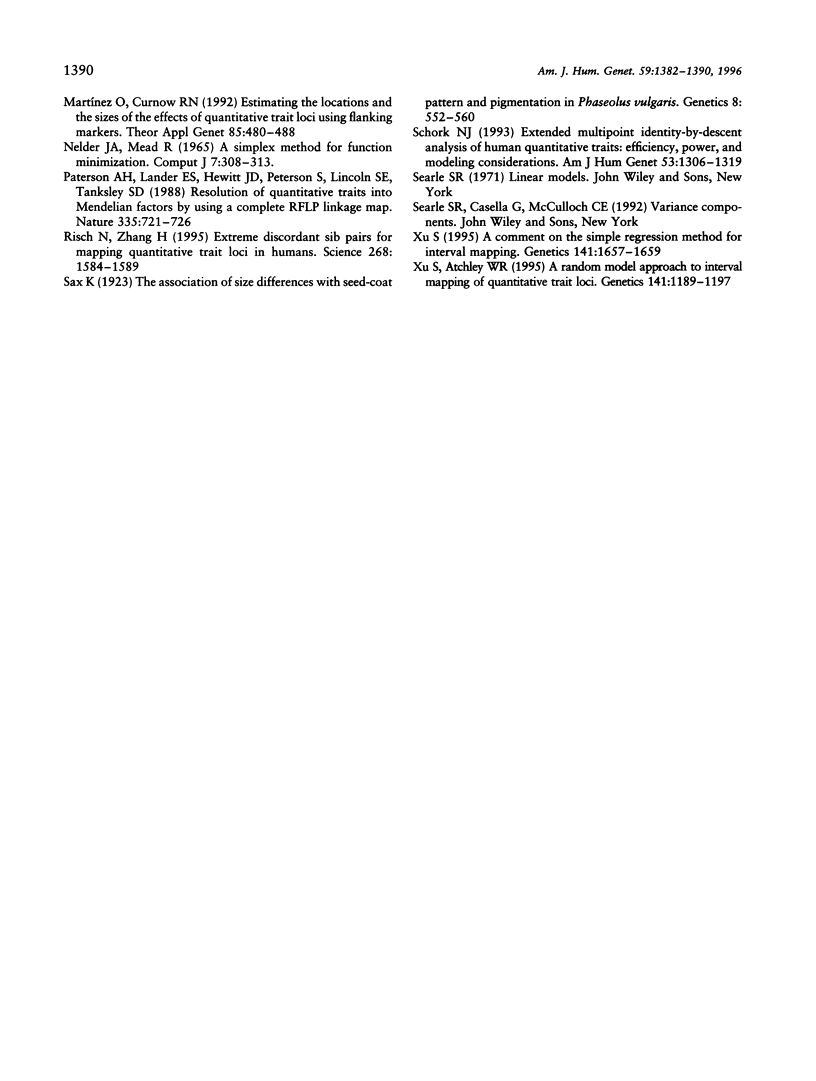
Selected References
These references are in PubMed. This may not be the complete list of references from this article.
- Amos C. I. Robust variance-components approach for assessing genetic linkage in pedigrees. Am J Hum Genet. 1994 Mar;54(3):535–543. [PMC free article] [PubMed] [Google Scholar]
- Amos C. I., Zhu D. K., Boerwinkle E. Assessing genetic linkage and association with robust components of variance approaches. Ann Hum Genet. 1996 Mar;60(Pt 2):143–160. doi: 10.1111/j.1469-1809.1996.tb01184.x. [DOI] [PubMed] [Google Scholar]
- Carey G. A general multivariate approach to linear modeling in human genetics. Am J Hum Genet. 1986 Dec;39(6):775–786. [PMC free article] [PubMed] [Google Scholar]
- Fulker D. W. A biometrical genetic approach to intelligence and schizophrenia. Soc Biol. 1973 Sep;20(3):266–275. doi: 10.1080/19485565.1973.9988053. [DOI] [PubMed] [Google Scholar]
- Fulker D. W., Cardon L. R. A sib-pair approach to interval mapping of quantitative trait loci. Am J Hum Genet. 1994 Jun;54(6):1092–1103. [PMC free article] [PubMed] [Google Scholar]
- Goldgar D. E. Multipoint analysis of human quantitative genetic variation. Am J Hum Genet. 1990 Dec;47(6):957–967. [PMC free article] [PubMed] [Google Scholar]
- Haley C. S., Knott S. A. A simple regression method for mapping quantitative trait loci in line crosses using flanking markers. Heredity (Edinb) 1992 Oct;69(4):315–324. doi: 10.1038/hdy.1992.131. [DOI] [PubMed] [Google Scholar]
- Haseman J. K., Elston R. C. The investigation of linkage between a quantitative trait and a marker locus. Behav Genet. 1972 Mar;2(1):3–19. doi: 10.1007/BF01066731. [DOI] [PubMed] [Google Scholar]
- Jinks J. L., Fulker D. W. Comparison of the biometrical genetical, MAVA, and classical approaches to the analysis of human behavior. Psychol Bull. 1970 May;73(5):311–349. doi: 10.1037/h0029135. [DOI] [PubMed] [Google Scholar]
- Knott S. A., Haley C. S. Maximum likelihood mapping of quantitative trait loci using full-sib families. Genetics. 1992 Dec;132(4):1211–1222. doi: 10.1093/genetics/132.4.1211. [DOI] [PMC free article] [PubMed] [Google Scholar]
- Kruglyak L., Lander E. S. Complete multipoint sib-pair analysis of qualitative and quantitative traits. Am J Hum Genet. 1995 Aug;57(2):439–454. [PMC free article] [PubMed] [Google Scholar]
- Lander E. S., Botstein D. Mapping mendelian factors underlying quantitative traits using RFLP linkage maps. Genetics. 1989 Jan;121(1):185–199. doi: 10.1093/genetics/121.1.185. [DOI] [PMC free article] [PubMed] [Google Scholar]
- Loehlin J. C. Heredity-environment analyses of Jencks's IQ correlations. Behav Genet. 1978 Sep;8(5):415–436. doi: 10.1007/BF01067938. [DOI] [PubMed] [Google Scholar]
- Martin N. G., Eaves L. J. The genetical analysis of covariance structure. Heredity (Edinb) 1977 Feb;38(1):79–95. doi: 10.1038/hdy.1977.9. [DOI] [PubMed] [Google Scholar]
- Paterson A. H., Lander E. S., Hewitt J. D., Peterson S., Lincoln S. E., Tanksley S. D. Resolution of quantitative traits into Mendelian factors by using a complete linkage map of restriction fragment length polymorphisms. Nature. 1988 Oct 20;335(6192):721–726. doi: 10.1038/335721a0. [DOI] [PubMed] [Google Scholar]
- Risch N., Zhang H. Extreme discordant sib pairs for mapping quantitative trait loci in humans. Science. 1995 Jun 16;268(5217):1584–1589. doi: 10.1126/science.7777857. [DOI] [PubMed] [Google Scholar]
- Sax K. The Association of Size Differences with Seed-Coat Pattern and Pigmentation in PHASEOLUS VULGARIS. Genetics. 1923 Nov;8(6):552–560. doi: 10.1093/genetics/8.6.552. [DOI] [PMC free article] [PubMed] [Google Scholar]
- Schork N. J. Extended multipoint identity-by-descent analysis of human quantitative traits: efficiency, power, and modeling considerations. Am J Hum Genet. 1993 Dec;53(6):1306–1319. [PMC free article] [PubMed] [Google Scholar]
- Xu S., Atchley W. R. A random model approach to interval mapping of quantitative trait loci. Genetics. 1995 Nov;141(3):1189–1197. doi: 10.1093/genetics/141.3.1189. [DOI] [PMC free article] [PubMed] [Google Scholar]


